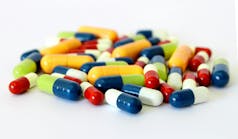Last October 3, the Food and Drug Administration released a draft guidance: a “Framework for Regulatory Oversight of Laboratory Developed Tests (LDTs).” Release of the 41-page document opened a 120-day comment period in which stakeholders can respond to it.
In the document’s Introduction, the FDA lays out the purpose of the draft:
This document describes a risk-based framework for addressing the regulatory oversight of a subset of in vitro diagnostic devices (IVDs) referred to as laboratory developed tests (LDTs). This document is intended to provide guidance to clinical laboratories that manufacture LDTs about how FDA (the Agency) intends to enforce authorities that apply to such laboratories as medical device manufacturers under the Federal Food, Drug, and Cosmetic Act….Specifically, this document describes FDA’s priorities for enforcing premarket and postmarket requirements for LDTs as well as the process by which FDA intends to phase in enforcement of FDA regulatory requirements for LDTs over time.
The document then describes a plan under which the agency would establish new regulations increasing oversight by the agency of LDTs. At present, LDTs are regulated under state laws, the Clinical Laboratory Improvement Amendments (CLIA), and accreditation by the College of American Pathologists and similar authorities. The proposal outlined in the draft guidance would regulate LDTs under the Food, Drug, and Cosmetic Act—as “medical devices.”
Certainly, there is a range of opinion on this proposal, as with any controversial issue. Certainly, clinical laboratory organizations readily acknowledge that this is a fair topic for the FDA to be discussing; the number of LDTs has increased greatly in recent decades, and regulation, and even, sometimes, duplicative regulation can support patient safety. But an impressive coalition of associations representing clinical laboratory professionals has been forming to oppose the increased regulation and suggest that the proposed new FDA oversight would hamper labs’ ability to serve patients by making it more difficult for patients to have access to needed assays and by discouraging innovation. Specifically, they are focusing on what they see as a fundamental flaw in the FDA’s reasoning: LDTs are not medical devices.
That key point was made by Alan Mertz, president of the American Clinical Laboratory Association (ACLA), when he testified before a congressional committee in September and in a column published in the November 2014 issue of MLO: “LDTs are not ‘devices’ as defined by the Food, Drug, and Cosmetic Act (FDCA). As the text and legislative history of the ‘device’ definition show, this term encompasses only articles. LDTs are proprietary procedures for performing a diagnostic test using reagents and laboratory equipment. They are essentially know-how, not physical articles.”
The opposition has gathered its forces quickly. The American Association for Clinical Chemistry (AACC) recently issued a statement asserting that LDTs are sufficiently regulated by the Centers for Medicare and Medicaid Services (CMS), and that too much additional FDA oversight could prevent labs from helping underserved patient populations. The AACC has joined the ACLA, the American Medical Association (AMA), American Hospital Association (AHA) , the American Society of Hematology (ASH), the Association for Molecular Pathology (AMP), the National Independent Laboratory Association (NILA), and more than 40 other major healthcare organizations in signing a letter requesting that the FDA withdraw the draft guidance documents and re-issue them through the rulemaking process required under the Administrative Procedures Act. The ACLA has retained former Solicitor General Paul D. Clement and Laurence H. Tribe, professor of constitutional law at Harvard, for representation on matters relating to the draft guidance—extremely prestigious legal minds.
The comment period ends in early February. It will be interesting to see what course the FDA chooses after that. Visit www.fda.gov/downloads/MedicalDevices/DeviceRegulationandGuidance/GuidanceDocuments/UCM416685.pdf to view the draft guidance document and see how to submit comments and suggestions.





